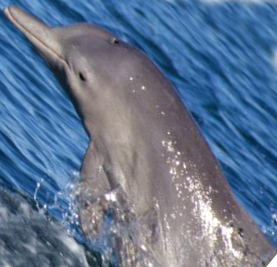Huge poll finds new dolphin near Australia
 A new species of dolphin has been discovered in Australian waters.
A new species of dolphin has been discovered in Australian waters.
A variety of humpback dolphin not previously know to science was identified by a team of researchers in a massive study of humpback dolphins in the Atlantic, Indian, and Pacific oceans.
The humpback dolphin, named for a hump just below the dorsal fin, was examined using both physical features and genetic data so researchers could better understand its evolutionary history.
The study has provided the best evidence to date to divide the Indo-Pacific humpback dolphin into three species, one of which is completely new.
“Based on the findings of our combined morphological and genetic analyses, we can suggest that the humpback dolphin genus includes at least four member species,” said Dr. Martin Mendez, Assistant Director of the Wildlife Conservation Society’s Latin America and the Caribbean Program and a lead author on the study.
“This discovery helps our understanding of the evolutionary history of this group and informs conservation policies to help safeguard each of the species.”
The authors propose new headings to categorise four species in the humpback dolphin family: the Atlantic humpback dolphin (Sousa teuszii), found in the eastern Atlantic off West Africa; the Indo-Pacific humpback dolphin (Sousa plumbea), which lives from the central to the western Indian Ocean; another species of Indo-Pacific humpback dolphin (Sousa chinensis), inhabiting the eastern Indian and western Pacific Oceans; and a fourth Sousa species, the new species found off northern Australia which has yet to be named.
“New information about distinct species across the entire range of humpback dolphins will increase the number of recognized species, and provides the needed scientific evidence for management decisions aimed at protecting their unique genetic diversity and associated important habitats,” said Dr. Howard Rosenbaum, Director of WCS's Ocean Giants Program and senior author on the paper.
The humpback dolphin grows up to 2.5 metres long and ranges from dark gray to pink or white in colour. The species generally inhabits coastal waters, deltas, estuaries, and occurs throughout the Indian and Pacific oceans to the coasts of Australia. The Atlantic humpback dolphin is considered “Vulnerable”, according to international authorities.








 Print
Print